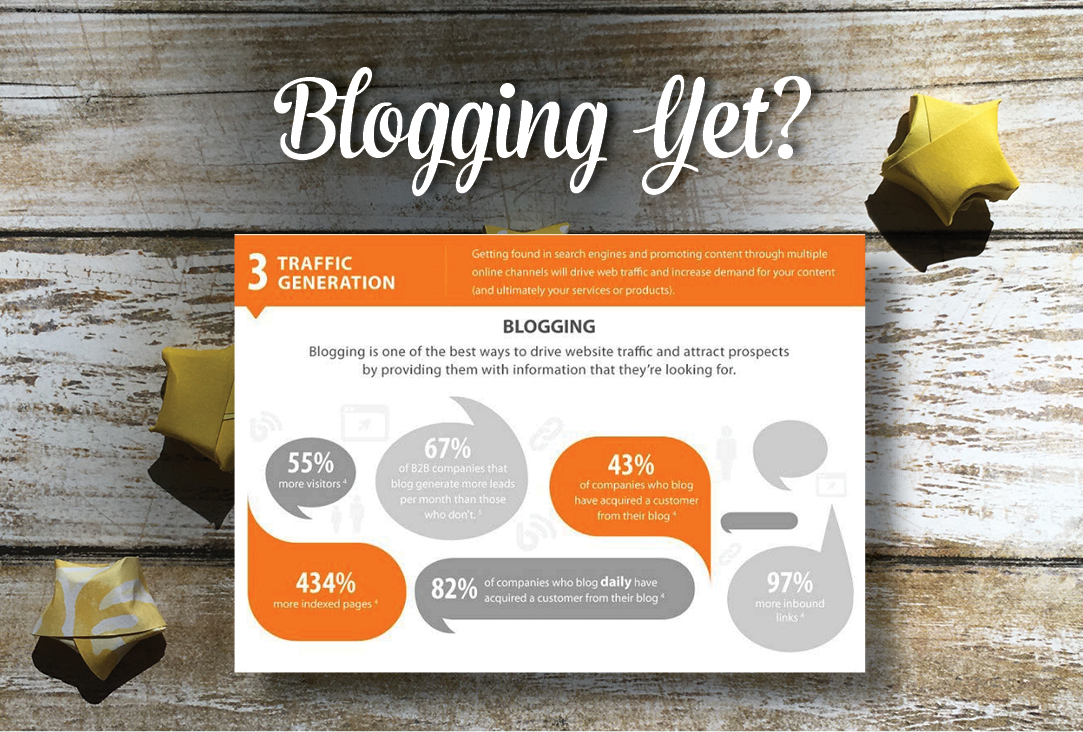
I’ve highlighted part of this infographic (click on the image to read the whole piece) to look at some very interesting stats for businesses who practice Internet marketing.
Generating Leads
This graphic says “67% of B2B companies that blog generate more leads than companies that don’t.”
That’s a pretty important statistic.
A lead is a website visitor that has left enough personal information behind that the company can contact them—most likely by way of regular email communication. That’s some real-life data that supports businesses having a blogging strategy. The 82% figure for daily bloggers is also pretty impressive, but if you could create a strategy that involved three blog articles per week of fantastic content you’re doing great.
Google Juice
The graphic says companies that blog have seen a 434% increase in indexed pages. Not a surprise at all. Every day Google sends out its crawler bots to search out new Internet content. It comes back with that info and indexes it in the ginormous global databank that is Google.
Every blog article is seen by Google as a new page on your website. Websites with fresh content—not rewritten homepages, but entirely new pages which is what blog articles represent—are rewarded by Google (and other search engines) over websites that don’t change. This matters because if your blog articles strategically use keywords your existing customers are using to find you, then new customers will easily find your blog articles.
Do inbound links matter?
The last time I read an article on SEO, inbound links mattered. So I’m going to say they still do (please point me to a contrary article if this has changed—I love learning.)
Inbound links are links to your content that other websites post or publish. For example, I linked the above infographic image back to the full image on the MarketingProfs website. I also link to them as a resource in my website’s footer. There are two inbound links I gave them, and they didn’t even have to ask me to do it. Backlinks to your site give your site authority within Google, so Google will move your site higher in search engine results when people are looking for the keywords that match what your business offers.
Look at the full infographic to see how B2B businesses are finding customers on Twitter, LinkedIn and other social media platforms.




